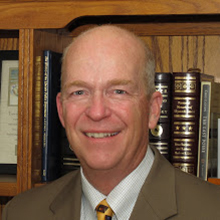PulsePoint milestone met
When we implemented PulsePoint, the remarkable application that delivers alerts to smartphones when a need for CPR exists in a public place nearby, I had hoped to reach 5,000 users within the first year. Last night, we passed the 5,000 mark–on the 82nd day following the public launch of PulsePoint in Lincoln on October 8, 2015.
While 5,000 seems like a mighty good number to me, it really was a goal plucked from the air. The PulsePoint foundation had suggested that a reasonable goal is to reach 1% of the population in year one. When we blew by that in the first week, we just set our sights on 5,000. I think several good things have resulted from PulsePoint in Lincoln.
- 26 CPR alerts have been sent to 128 smartphones. Although we do not yet have a documented case where a PulsePoint alert resulted in bystander CPR before the arrival of LF&R, we know that in at least a few cases PulsePoint-equipped citizens responded and tried to assist. This case at a local motel certainly demonstrates the potential, and a PulsePoint-enabled save is simply a matter of time.
- About 1,400 citizens have signed up for alerts pertaining to injury vehicle crashes and structure fires. These people are receiving notifications that allow them to avoid the traffic snarls that accompany such events, in which multiple LPD and LF&R vehicles are converging on the scene of an emergency. Anecdotally, this appears to be one of the most useful aspects of PulsePoint in daily use.
- The news media has widely adopted PulsePoint. Reporters are getting story leads quickly, are able to notify their audience of emergencies, and are producing more stories than ever about the work of LF&R. It is common to see media outlets using screen shots from PulsePoint in tweets and on websites. One reporter told me that PulsePoint had significantly changed the way their newsroom works.
- Lincoln Fire & Rescue personnel are occasionally getting a jump on dispatches. Most firefighters have loaded PulsePoint on their personal smartphones. Since the PulsePoint alert often hits the phone even before the dispatcher has had the opportunity to put the call out over the radio, crews sometimes get a few seconds head start. I witnessed this personally one day when Engine 3’s crew was dashing for the rig well in advance of the radio dispatch. Managers like the chief, myself, assistant chief, and battalion chiefs are also benefitting from rapid notification of emergent events.
- The number of AEDs registered in Lincoln has increased three-fold, as many PulsePoint users have either adopted the companion app, PulsePoint AED, or have just noticed that the AED in their workplace has never been registered with the local emergency service, as required. PulsePoint displays the location of the nearest AED when a CPR alert is sent.
- Citizens have a much better concept of the work performed by their 911 center personnel and firefighters. PulsePoint has exposed the volume and variety of incidents to a good swath of the public. People mention this to me regularly. In answering the question “I wonder where those sirens are going?,” we are not just satisfying curiosity. we are building public understanding and support.
- PulsePoint has increased public awareness of the importance of bystander CPR in the chain of survival for sudden cardiac arrest. Deploying the app has caused a buzz in the community, and even without a smartphone in sight, will increase the likelihood that good Samaritans in Lincoln will step forward to help when needed.
This post was originally published on December 29, 2015 on Director Casady’s blog.
FEATURED BLOGGER
Tom Casady
Director of Public Safety
Lincoln Department of Public Safety, Nebraska
